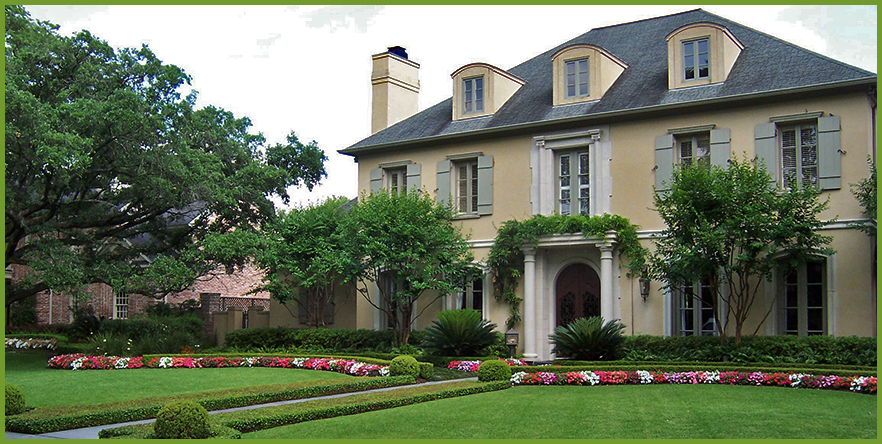Become the envy of your neighborhood
Learn the tricks the pros use!

In every neighborhood, no matter where you live, there is always the home with the perfect layered landscape and the home that has a landscape but it is one big unorganized mess. For the majority of us homeowners, our landscapes are somewhere in the middle of these two and we know for sure that we do not want to be the home with the unorganized landscape.
So how does your home become the one in the neighborhood with the perfect layered landscape that has the ground layer, foreground, midground, and background.
Layers
Ground Layer
This is the lowest layer of plants and turf that are no more than a foot off the ground. This area covers the bar soil and allows a natural buffer so you're not hugging the foundation with bigger plants or trees that can spill into the street or sidewalk.
The plants and turf used in this area should be selected for their compact growth and can be annuals, ground covers, and low perennials. This area can also provide a cover for the bases of plants in the foreground layer.
Foreground
The next vertical level is the foreground which features plants between the heights of twelve to twenty-four inches. The foreground is always small shrubs, smaller tropicals, larger annuals, small hedge material, and medium-sized perennials that form the edge of the plant beds.
Similar to the ground layer, these plants can be planted in mass quantities and they can be used to fill in larger spaces created by the midground. You can also allow these plants to spill in and out of the ground layer.
Midground
This area features plants from two to six feet. These plants are medium to larger sized shrubs, larger tropicals, dwarf varieties, and larger hedge material.
The midground takes up the bulk of the space and serve several functions by filling in areas, linking the lower layer and buildings to taller plants, and texture throughout the yard,
Background
This is the layer that features the biggest trees and shrubs. Trees and shrubs planted in this area are used to block views or to provide shade.
Trees and shrubs in this area take up bulk mass and can make a dramatic vertical statement, which is usually a focal point. Avoid large gaps in the vertical heights when moving from the foreground to the background layer.
These steps can help you get started when thinking of the landscape for your home. If you need additional help, the professionals at Moon Valley Nurseries offer free landscape design consultations. They are dedicated to making your house or even your business the nicest on the block. To schedule your design consultation, you can visit any of our nursery locations or you can schedule your appointment right here.
Submit a Comment